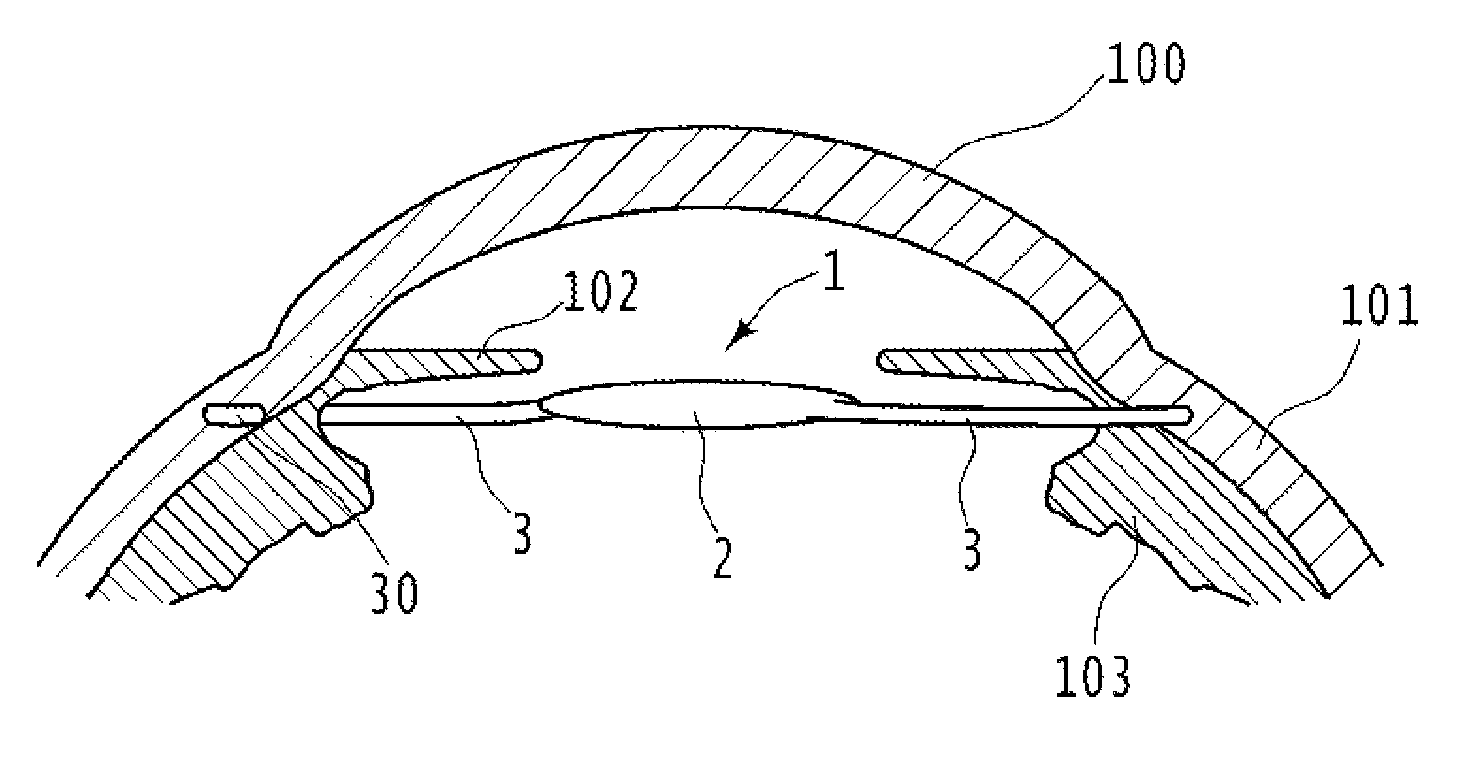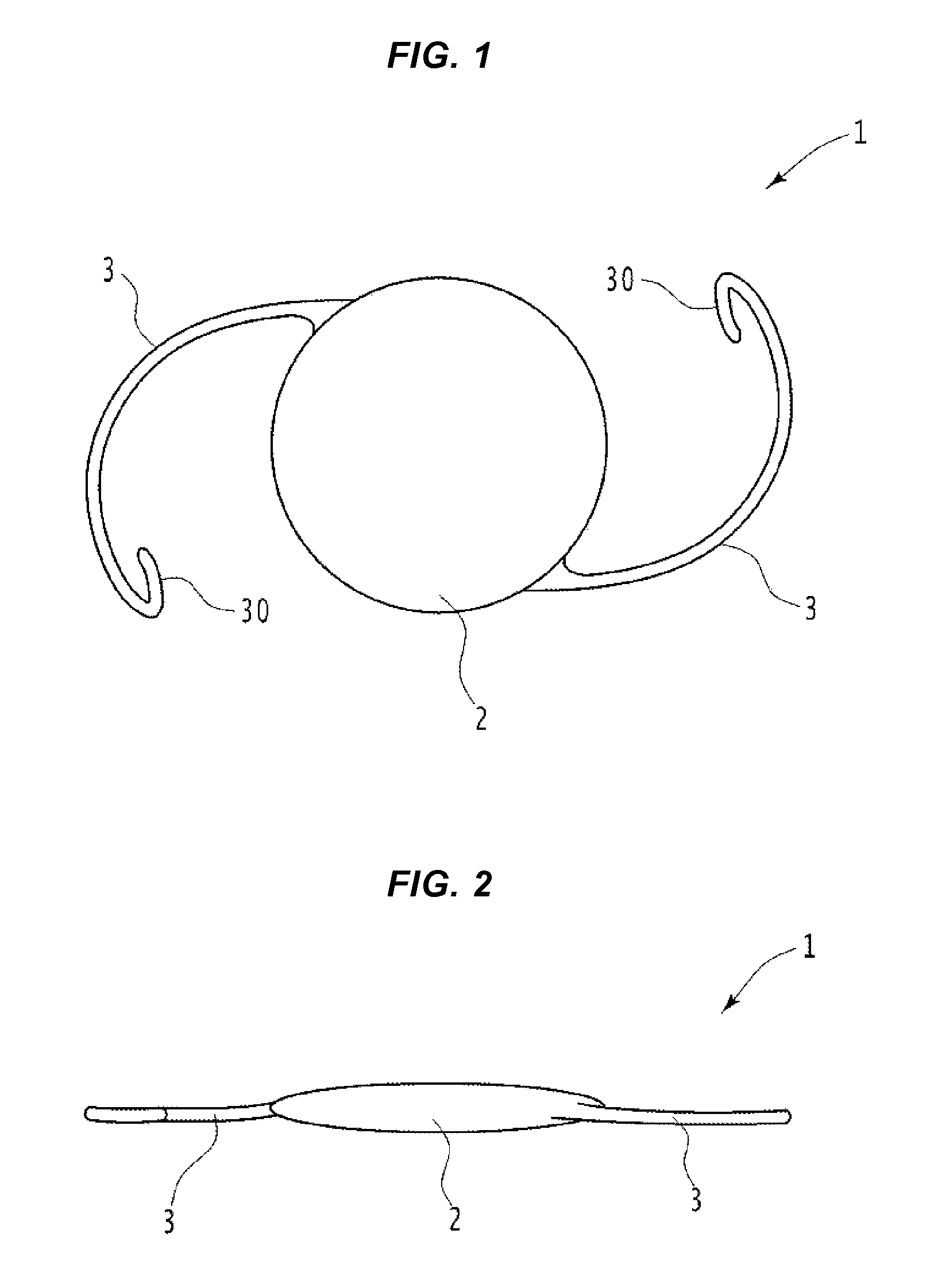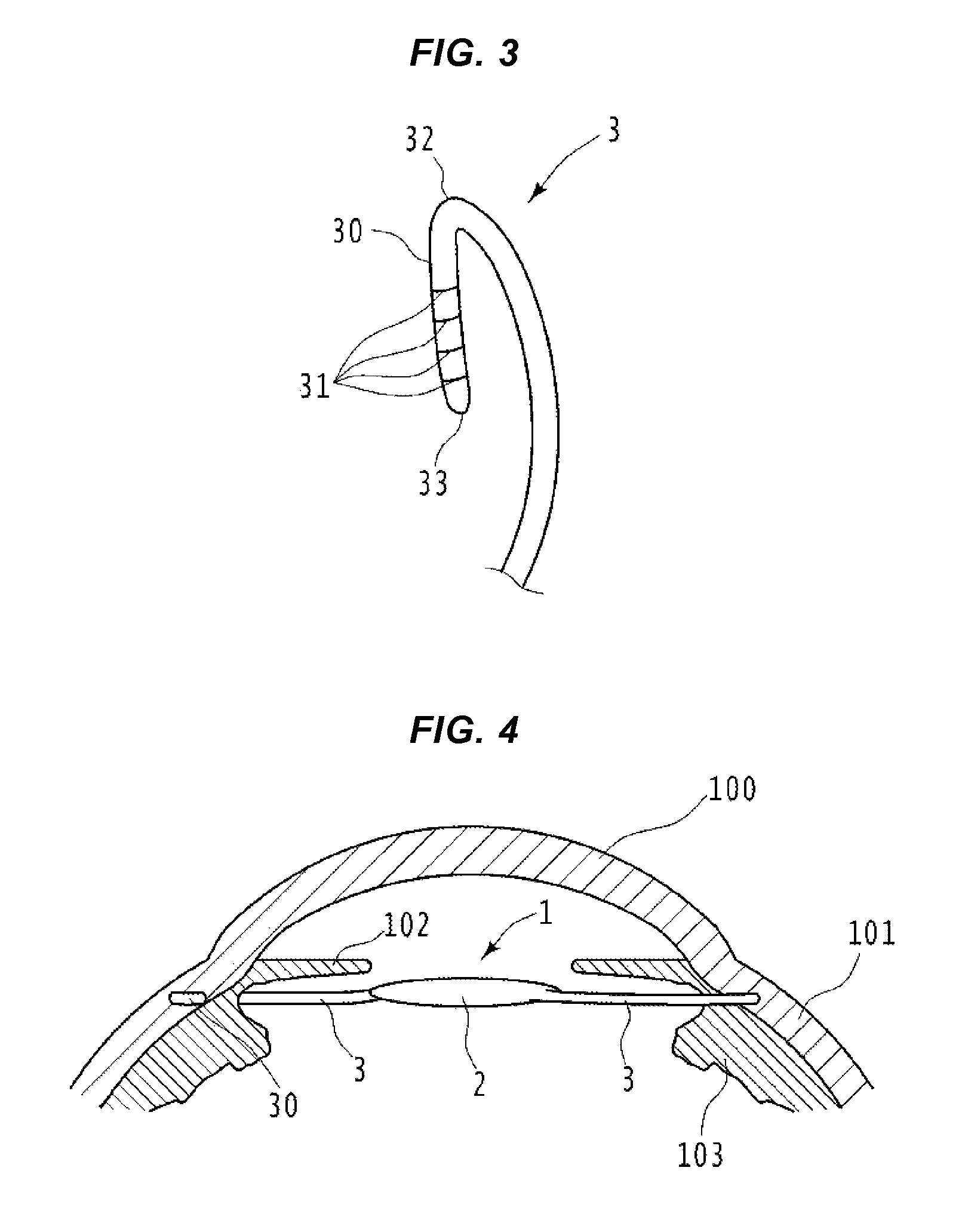Intraocular lens
a technology of intraocular lens and lens sclera, which is applied in the field of intraocular lens, can solve the problems that the adaptability (or specialization) of intraocular lens for fixation into the sclera is not sufficiently developed
- Summary
- Abstract
- Description
- Claims
- Application Information
AI Technical Summary
Benefits of technology
Problems solved by technology
Method used
Image
Examples
Embodiment Construction
[0024]Hereinafter, an embodiment of the invention will be described by referring to the drawings. First, FIGS. 1 to 3 illustrate an intraocular lens 1 of an embodiment of the invention. FIG. 1 is a front view of the intraocular lens 1, and FIG. 2 is a side view thereof (the description on the direction of the side surface, the front surface, or the like indicates the direction (the side surface, the front surface, or the like) in a face (or an eye) of a patient having an eye into which the intraocular lens is fixed).
[0025]The intraocular lens 1 mainly includes a lens 2 and a support portion 3. For example, the lens 2 is disposed at the rear section (or an eye rear section, that is, an area behind the iris) after an eye lens which becomes cloudy white due to the cataract is extracted (entirely or partially extracted) from the patient's eye so that the lens carries out the lens function of the extracted eye lens.
[0026]The support portion 3 is a portion that supports the lens 2 to the ...
PUM
 Login to View More
Login to View More Abstract
Description
Claims
Application Information
 Login to View More
Login to View More - R&D
- Intellectual Property
- Life Sciences
- Materials
- Tech Scout
- Unparalleled Data Quality
- Higher Quality Content
- 60% Fewer Hallucinations
Browse by: Latest US Patents, China's latest patents, Technical Efficacy Thesaurus, Application Domain, Technology Topic, Popular Technical Reports.
© 2025 PatSnap. All rights reserved.Legal|Privacy policy|Modern Slavery Act Transparency Statement|Sitemap|About US| Contact US: help@patsnap.com



